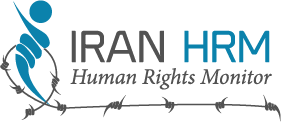Amnesty International published a study on March 4, confirming the “killings of minors in Iran’s November 2019 protests.”
According to Amnesty International 22 boys and a young girl whose age was between 8 and 12, were killed unlawfully by Iran’s security forces between November 15 and 19, 2019.
According to this study, “Amnesty International has uncovered evidence that the victims included at least 23 children – 22 boys, aged between 12 and 17, and a girl reportedly aged between eight and 12. The children were killed in 13 cities in six provinces across the country, and the vast majority on 16 and 17 November, reflecting the widespread and swift nature of the crackdown.
The young individuals confirmed killed by security forces by Amnesty International were listed as:
- Abolfazl Sha’bani, 16 or 17, killed on November 16, in Baharestan, Tehran Province;
- Ahmad Khajeh Albuali, 16 or 17, killed on November 18, in Mahshahr, Khuzestan Province;
- Ali Dabiri, under 18, killed on November 16, in Sadra, Fars Province;
- Ali Ghazlavi, 12, killed on November 17, in Khorramshahr, Khuzestan Province;
- Alireza Nouri, 17, killed on November 17, in Shahriar, Tehran Province;
- Alireza Ostovan, 17, killed on November 16, in Robat Karim, Tehran Province;
- Amir Hossein Davoudvand, 16 or 17, killed on November 17, in Yazadanshahr, Isfahan Province;
- Amir Reza Abdollahi, 13, killed on November 16, in Shahriar, Tehran Province;
- Arash Kahzadi, 16, killed on November 18, in Eslamshahr, Tehran Province;
- Armin Ghaderi, 15, killed on November 16, in Kermanshah, Kermanshah Province;
- Chan’ani, girl between 8 and 12 years old, killed on November 18, in Mahshahr, Khuzestan Province;
- Hamzeh Albereihi, 17, killed on November 16, in Ahvaz, Khuzestan Province;
- Hessam Baranirad, 17, killed on November 16, in Kermanshah, Kermanshah Province;
- Khaled Ghazlavi, 16, killed on November 16, in Khorramshahr, Khuzestan Province;
- Mehdi Valipour, 16, killed on November 17, in Baharestan Province;
- Mohammad Dastankhah, 16, killed on November 16, in Sadra, Fars Province;
- Mohammad Javad Abedi, 16, killed on November 17, in Isfahan, Isfahan Province;
- Mohammad Palani, 17, killed on November 17, in Kermanshah, Kermanshah Province;
- Mohammad Reza Ahmadi, 17, killed on November 16, in Sanandaj, Kurdistan Province;
- Mohsen Mohammadpour, 17, killed on November 16, in Khorramshahr Province;
- Mojahed Alyameyee, 15-17, killed on November 17, in Ahvaz, Khuzestan Province;
- Sassan Eydivandi, 17, killed on November 17, in Yazdanshahr, Isfahan Province;
- Sayed Ali Mousavi, 12, killed on November 16, in Ramhormoz, Khuzestan Province.
There is also another case of a young woman, Nikta Esfandani, 14, who was killed on November 16 in Tehran. Amnesty International wrote about her death that “there are widespread allegations that it resulted from the use of lethal force by Iranian security forces” but “the Iranian authorities have explicitly rejected the allegations, first stating that she was killed by ‘armed rioters’ and then claiming that she died from food poisoning.”
The study by Amnesty International also indicates that “at least 22 of the 23 children killed were shot dead by Iranian security forces unlawfully firing live ammunition at unarmed protesters and bystanders.” In 10 cases, Amnesty International confirmed, “the deaths occurred as a result of gunshots to the head or torso – indicating that the security forces were shooting to kill.”
While the Iranian regime has failed to conduct independent investigations, they have resorted to cover-up and harassment of families.
One family told Amnesty International, “If we talk, the security forces will threaten and harass us. We cannot say anything here [in Iran]. The atmosphere here is suffocating but we want our child’s name to stay alive.”
“Families of those killed in protests are being intimidated by the state from talking openly about their deaths,” AI learned. “Most have reported being forced to sign undertakings that they would not speak to the media and would observe restrictions on how they commemorate their loved ones in order to be able to receive their bodies. In many cases, security and intelligence officials have placed the families under surveillance and attended their funeral and memorial ceremonies in order to ensure that the restrictions are observed.”
In another part of its study, Amnesty International rejects the claim by Iranian authorities attributing the majority of the killings in the November protests to “armed ‘rioters’ working for ‘enemies’ of the Islamic Republic of Iran.” AI states, “extensive video footage analysed by Amnesty International’s Digital Verification Corps and numerous eyewitness accounts obtained by the organization provide clear evidence that those using firearms against unarmed protesters and bystanders belonged to Iran’s security forces, including the special forces of Iran’s police, plain-clothes paramilitary Basij agents and the Revolutionary Guards. Amnesty International has not to date located any video showing non-state actors firing live ammunition at unarmed people during the November 2019 protests.”
In conclusion, Amnesty International calls for an urgent mandate by the UN Human Rights Council: “The gravity of the violations perpetrated and the systematic impunity prevailing in Iran requires that the UN Human Rights Council urgently mandates an inquiry into the unlawful use of lethal force by Iranian security forces in the November 2019 protests.”
Iran Human Rights Monitor has identified at least 29 children Killed During Iran Protests.
The Iranian regime brutally cracked down on nationwide protests that erupted on November 15 after the regime tripled the price of gasoline. At least 1,500 protesters were killed, around 4,000 were wounded and injured and 12,000 were detained. Many of the detainees are under torture and several have died in prison.











